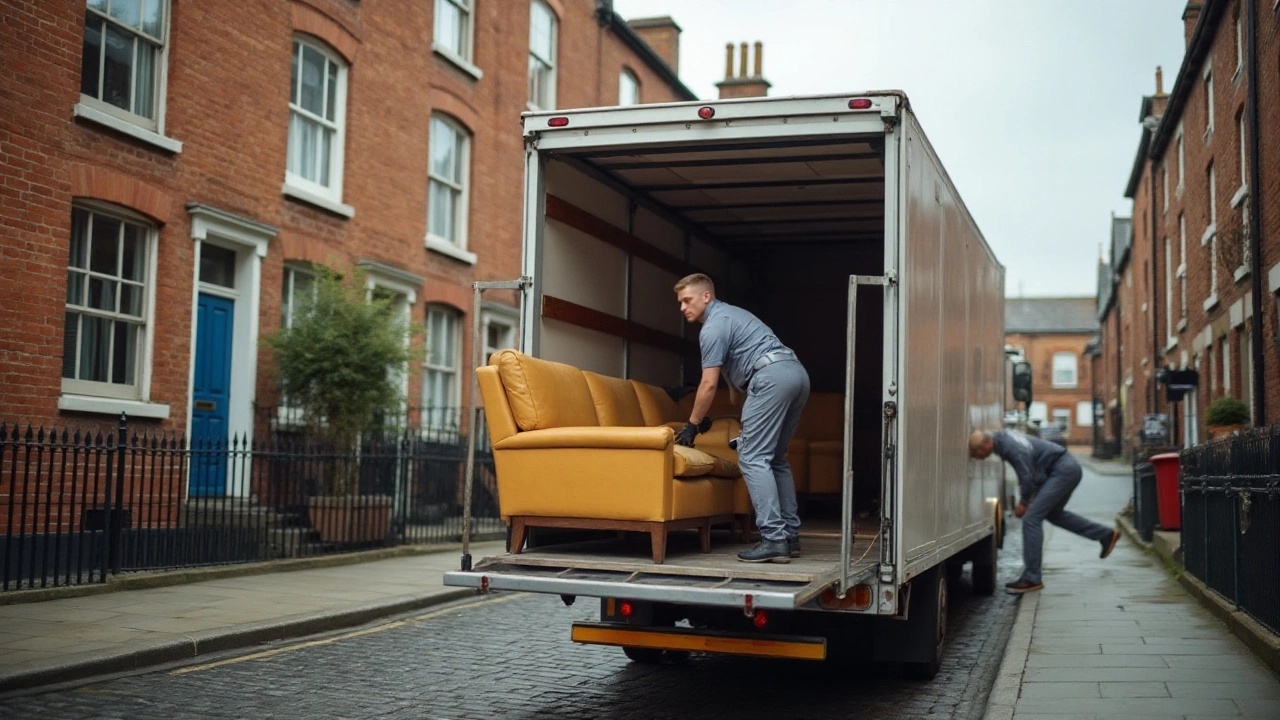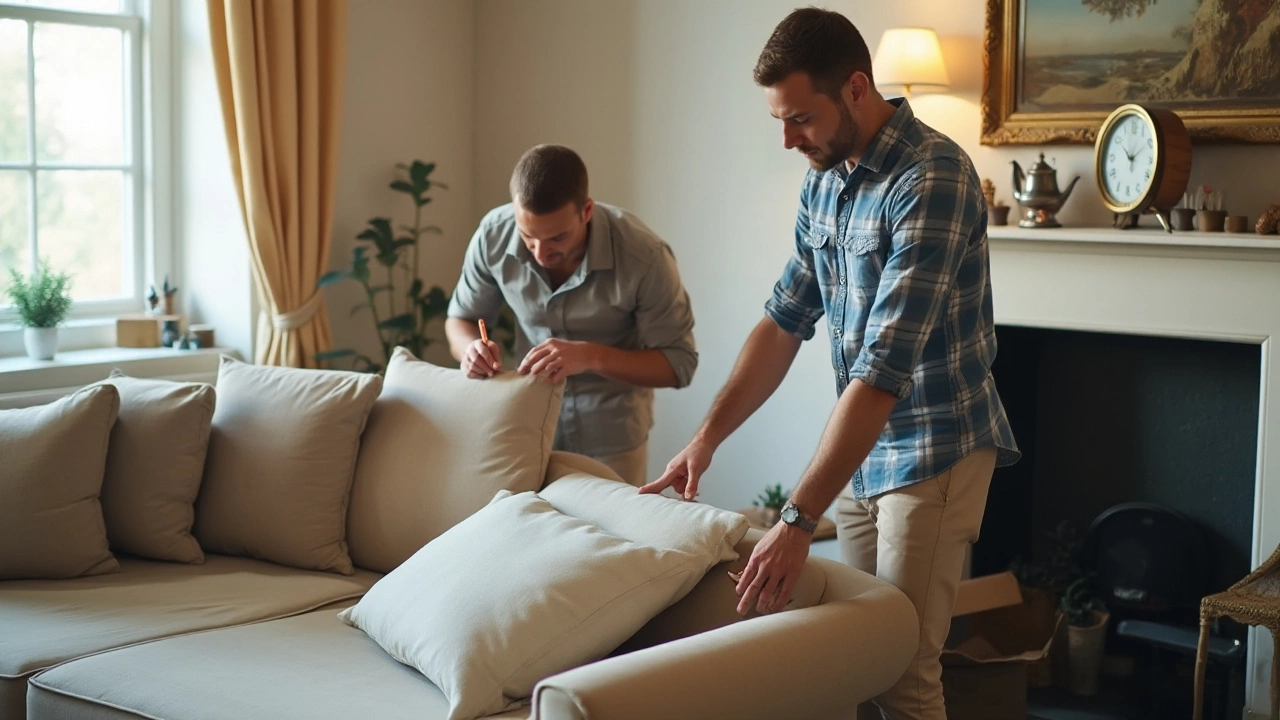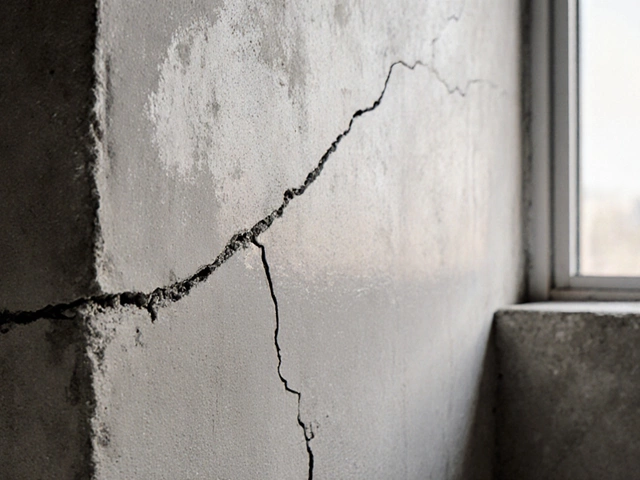Moving can be an overwhelming experience, filled with numerous decisions that determine the ease and success of the process. One of the often-debated topics is whether to remove couch cushions or leave them as they are. It might seem like a small aspect, but it can have a significant impact on how smoothly things go.
Ignorance to this detail could mean damaging your plush comfort or struggling to navigate through doorways. On the flip side, handling these cushions separately can ease transportation and prevent unwanted wear and tear. With the right approach, tackling this decision becomes part of an efficient moving strategy, ensuring your furniture is handled with care.
- Why Consider Removing Cushions
- Pros of Cushion Removal
- Cons of Leaving Cushions On
- Steps to Properly Remove and Store Cushions
- Protecting Your Sofa System
- Additional Moving Tips with Sofas
Why Consider Removing Cushions
When you find yourself in the throes of moving house, the prospect of transporting your couch cushions can spark an intriguing debate. It seems like such a minor component in the grand scheme of relocation, yet it bears more weight than one might initially assume. From a logistical standpoint, taking the time to remove the cushions from your sofa can drastically alter the dynamics of your move. By doing so, you streamline the shape of your furniture, essentially transforming a bulky, awkward piece into a much more manageable item to navigate through narrow doorways and tight corners.
There’s a certain practicality to this step that warrants consideration. Cushions are often the first elements to absorb wear and tear, showing signs of aging and damage long before the framework of the sofa does. By removing them, you are not only safeguarding the cushions against potential rips and stains but also preserving the structural integrity of your seating arrangement. This preemptive action can prove invaluable especially when dealing with high-traffic areas where accidents are more likely to occur. Moreover, a simpler shape is easier to wrap in protective materials like bubble wrap or moving blankets, further reducing the risk of cosmetic damage.
The decision is not merely about convenience; it also extends to the realm of preservation. Consider the perspective of moving professionals, who often recommend cushioning removal. "Our golden rule is to reduce complexity wherever possible," notes an experienced relocation specialist from a leading moving company.
“Removing cushions allows movers to better balance the load and protects against scratches or snags during the move.”This insight sheds light on how strategically emptying your couch of detachable elements can expedite the process, ensuring a swifter and safer transition from Point A to Point B.
When you also take into account the potential cost implications, the case for cushion removal becomes even more compelling. Damages incurred during transportation can result in significant repair costs or, in some cases, the necessity to replace the damaged items entirely. By mitigating this risk from the outset, you are effectively preserving your investment in quality furnishings. These cushions, while seemingly insignificant, play a pivotal role in both the aesthetic and functional value of your living space. Addressing their transport with proper care can preempt wasteful expenditure and prolonged inconvenience.
Additionally, with smaller loads come reduced strain on the workforce, meaning you're not only making life easier for the movers but potentially lessening your own financial burden. And let's not overlook the practicalities of storage: cushion-free couches become inherently easier to fit into moving vans or storage units, maximizing available space in a manner that is both practical and efficient. There's an element of strategic forethought involved when deciding to separate couch from cushion, a consideration that often leads to a more efficacious relocation experience.
Finally, think about the organizational advantages. Packing cushions separately gives you the opportunity to inspect and clean them, something often neglected as part of the usual maintenance routine. By storing them in vacuum-sealed bags, you can save space while keeping them dust-free. A simple yet highly effective measure, it adds a layer of protection that cushions left on the couch simply can't benefit from. Preparing your couch components this way ensures they're fresh and clean when it’s time to reassemble your beloved sofa in your new home.
Pros of Cushion Removal
When faced with the task of relocating, the idea of removing couch cushions is more than just a trivial decision; it's a strategic move that comes with distinct advantages. First and foremost, removing the cushions can considerably reduce the weight of your sofa, making it easier to carry. This becomes particularly beneficial in scenarios where you need to navigate tight corners or maneuver through narrow hallways. Lightening the load can also reduce the risk of injury, which is always a priority during any moving endeavor.
There's another notable advantage in removing the cushions, extending to the protection of the sofa itself. Without the bulk of the cushions pressing against the fabric, you diminish the risk of accidental tears or snags. The sofa’s frame is often more robust, designed to endure such pressures, something the softer, more fragile cushions were never meant to do. By removing them, you also allow for more comprehensive wrapping of the frame, often using blankets or protective wraps, which adds an extra layer of security during transportation.
Removing the sofa cushions also grants a window of opportunity to conduct a thorough cleaning, which might otherwise remain neglected. Finding the time to clean behind these cushions might not always fit into your busy day-to-day schedule, but moving offers a perfect excuse. Now’s your chance to tackle those crumbs and dust bunnies that have taken up residence in your couch’s crevices. Not only does this ensure that your sofa starts fresh in your new home, but it also helps maintain its overall value and condition.
Many professional movers recommend this practice for its efficiency and effectiveness. Angie Hicks, founder of a reputable moving service review platform, is known for her advice on such matters. She once remarked,
"Reducing weight and bulkiness is key when moving furniture. Detachable parts like cushions should always be removed."This advice underscores the practical benefits seen by experts in the field.
Another factor to consider is the increased flexibility and accessibility that comes with cushion removal. Without cushions, sofas often become more pliable, allowing movers to angle or tilt them as needed to fit through tight spaces without causing unnecessary strain or damage. This flexibility is especially valuable when moving into older homes or apartments where door frames and stairwells were not designed with modern furniture dimensions in mind.
Finally, by removing the cushions, you can often better utilize space within the moving vehicle. Cushions can be compressed slightly and arranged to fill gaps around other packed items, maximizing the truck’s capacity. This efficient packing means potentially fewer trips are required, saving both time and fuel costs. The significance of these logistics cannot be overstated when considering the often-tedious process of organizing a move.

Cons of Leaving Cushions On
When it comes to relocating your beloved couch, deciding whether to leave the couch cushions in place or not might seem trivial, yet it carries significant implications. Keeping the cushions on during a move can lead to several issues that may affect both the integrity of your furniture and the ease of your moving process. For one, leaving the cushions on can make the couch substantially heavier and bulkier. This added weight can significantly increase the risk of injury to anyone attempting to move it, complicating what is already a physically demanding task.
Moreover, couches with the cushions left on become harder to maneuver through narrow spaces such as doorways and staircases. This difficulty not only increases the likelihood of damaging the couch or the surroundings but can also lead to extended moving times and potential additional labor costs. Handling a bulky sofa through tight spots can easily result in unsightly rips or stains if the cushions snag against sharp edges or dirt.
Another notable drawback is that cushions provide inadequate protection to the delicate fabric or leather of a sofa during transport. They can shift around, leading to wear and tear, especially when moving over a bumpy surface, thus wearing out the fabric sooner and possibly causing deformation. "Transporting a couch with cushions left in place is like wearing a suit to a rugby match," noted interior designer Marianne Belford, emphasizing the need for proper handling during moves.
Besides these physical challenges, keeping the *couch cushions* attached may compromise their form. Prolonged pressure during transportation can lead to permanent imprints or dents, affecting the cushion's comfort and aesthetic appeal once the move is complete. This can be particularly problematic if the cushions are made of memory foam or any material susceptible to shape distortion. Not to mention, any pre-existing spills or dirt might transfer from the cushions to the couch itself, leaving you with extensive cleaning tasks once you arrive at your new home.
Financially, the repercussions of leaving the cushions on could be significant if it results in damage that requires professional repair. Ultimately, these repairs can be more costly than the initial moving expenses. In a survey conducted by MoveSafe, 35% of respondents reported incurring furniture repairs after a move due to leaving cushions on larger pieces, underscoring the risk tied to this seemingly minor decision.
All things considered, while leaving cushions on may appear convenient, assessing the potential cons provides a clearer picture of the various problems that can arise. Weighing these drawbacks against the pros of sofa moving with cushions removed might lead to more efficient decision-making, safeguarding both your prized furniture and peace of mind during the moving journey.
Steps to Properly Remove and Store Cushions
When it comes to moving, you want to treat your precious couch cushions like royalty. Why? Because these are the unsung heroes of comfort in any living room. Properly removing and storing your couch cushions can mean the difference between a smooth relocation and a disastrous day filled with mishaps. It starts with understanding the make-up of your sofa. Look at how the cushions attach—most modern couches use either zippers or Velcro to keep these cozy squares in place. Understanding this basic structure will prepare you for the next steps in the moving process.
The first step is a careful examination of your cushions for any loose threads or visible tears. Skipping this might mean further damage during transit. Once inspected, gracefully unzip the covers or detach the Velcro, taking note of where each cushion belongs for easier reassembly at your destination. Remember, organization now saves headaches later. Depending on your sofa's material, you might notice that the cushions can be larger than expected. Take this into account as it might require strategic packing.
Storage Techniques
Proper storage is like giving your cushions a spa day—essential before a big adventure. Start by considering the environment; they don’t fare well against moisture or excessive sunlight. If you're using boxes, opt for breathable ones, ensuring that the air circulates to prevent any mold or odors. Line the base with a clean sheet or blanket for added protection. You see, placing them directly into boxes could expose them to dust or dirt. Wrap each cushion separately—plastic shrink wrap works wonders in offering that extra layer of protection. Just don't wrap too tightly to avoid flattening those precious cushions.
Moving experts, like those quoted in a famous relocation guide, often mention how
"pre-packing and using the right materials can extend the life of your furniture by a good margin"—wise words when you want to preserve their fluffiness. Alternatively, you might want to use vacuum-sealed bags if you're tight on space, but again, avoid compressing them too much. Each cushion needs enough protection to comfortably survive the jostles of any move.
Labeling and Organization
Consider the labeling aspect as your safety net when you reunite with your sofa. Use high-quality labels that won’t peel off and write down the corresponding couch section for every cushion. Arrange them according to priority during packing. For instance, cover cushions should ideally go on top of box cushions to avoid unnecessary pressure. Stacking them in layers inside your moving truck keeps them safe from the weight of heavier furniture items, which is often a prime cause of damage.
If you prefer leaving your couch assembled during the move, ensure the cushions are strapped down securely so they don't slip away. Moving professionals often recommend simple straps for this purpose. An organized approach simplifies the entire process, and with these steps laid out, you can move forward confidently, knowing your couch cushions will continue providing comfort in your new abode.

Protecting Your Sofa System
Ensuring the safety and integrity of your sofa during a move requires more than just brute strength and a few spare hands. It's a thoughtful process that encourages you to dive deeper into understanding your furniture's vulnerabilities and strengths. When you're waxing lyrical about the lushness of your couch, the last thing on your mind is usually the logistics involved in relocating it. Yet, with a significant investment often comes a need for thorough precautionary measures. Protecting your sofa and its cushions isn’t just about preserving their current appearance but also ensuring their longevity and comfort for future use.
Handling your couch correctly begins with knowing the material you're working with. Are your sofa and cushions made from leather, fabric, or some plush material that requires special care? This detail dictates the protective measures you adopt. For instance, leather couches benefit immensely from breathable yet tough covers that protect against scratches while preventing moisture buildup that can warp or ruin the leather. Cloth covers may need more layers to prevent staining or tearing, especially during rough transportation through narrow corners and up or down stairs.
Having identified your sofa's needs, the next step would be wrapping up the cushions separately if you decide to remove them. While it may seem like added work, separating the cushions can make your sofa more manageable. Moreover, the plush layers need careful packaging; bubble wrap or specially designed cushion bags might be what you need to keep dirt and damage at bay. George H. Peterson, author of "Moving Masterlist," asserts,
"The proper wrapping technique not only protects but allows for easier stacking and loading, optimizing space."
In other words, investing in the right packaging material is not redundant; it's a proactive step toward safeguarding comfort and luxury. Moving doesn't have to be a disorderly affair if you plan your approach wisely. It's also worth considering that tying your couch sartorially with straps can further prevent shifting that might shift the vehicle's weight while driving. Speaking to experts in furniture moving can likewise give you insights into assembling and disassembling those seemingly inflexible components.
Furniture transport experts recommend labeling every item, including parts layered within boxes or other spaces. This way, you're not just preserving your sofa but also enhancing the clarity and efficiency of your loading and unpacking process. The last thing anyone desires after a frantic move is to sort through a chaotic mass of unidentified cushions and parts. Remember, protecting a sofa is a tribute to the space it inhabited and will inhabit again, showing the care and intentionality you bring to the environments you craft.
Additional Moving Tips with Sofas
When it comes to moving, the sofa is often one of the trickiest pieces of furniture to handle. These bulky items can be awkward to maneuver through tight spaces and require both strategy and strength. It's essential to consider several factors when preparing your sofa for a move. From measuring doorways to finding the optimal path through your house, planning can greatly ease the process. One practical tip is to use protective cloth or sofa covers to shield the upholstery from dirt and damage. This extra layer can save your couch from scuffs and tears during transit. Remember, keeping your sofa clean during a move ensures it looks great in your new home.
Navigating staircases and narrow hallways is another challenge many face. Utilizing blankets or moving pads can prevent your sofa's surface from scraping against walls and bannisters. Wrapping furniture in these pads also provides cushioning against impacts. If you’re using a professional moving company, they often bring these supplies, but it's wise to invest in your own if moving solo. Speaking of professional movers, don't hesitate to call in experts, especially if your sofa is heavy or cumbersome. They are trained to handle such items, often possessing special equipment to simplify the task. As the saying goes, “Work smarter, not harder.”
The disassembly of furniture pieces, whenever possible, can facilitate easier transport through narrow spots. Look for removable legs or backs, which can drastically shrink the sofa's space footprint. Keep an instruction manual handy in case you need guidance on disassembly and reassembly. Labeling parts and keeping hardware in a tidy bag can prevent headaches later, so everything reunites correctly. Consider how you’ll protect your sofa moving from one place to another by planning packing methods in advance. Additionally, having more hands on deck during the move provides both physical and emotional support, as extra minds can brainstorm solutions to unexpected issues.
"We often encourage clients to take their time measuring and planning the moving route carefully," says Ethan Reynolds, a veteran logistics specialist with over 20 years of moving expertise. "Rushing through these steps can lead to excessive strain on both the movers and the furniture."
A surprising fact is that the average household sofa weighs between 150 to 250 pounds, depending on its size and material. Knowing this allows people to plan how many helpers they might need and determine if additional moving aids, such as dollies or straps, are required. These tools not only ease the burden but also help with maintaining balance while moving. Additionally, weather conditions should be taken into account. If it’s a rainy or particularly dusty day, avoid moving a fabric-covered sofa unless it is well protected.
Lastly, having a clear destination in mind for where the sofa will go in your new place saves you from extra rearranging later. Measure the new space beforehand to avoid squeezing it into unsuited areas. Once the couch cushions and the main body are in position, you’ll thank yourself for that foresight when you sink into the couch at the end of a successful move.







